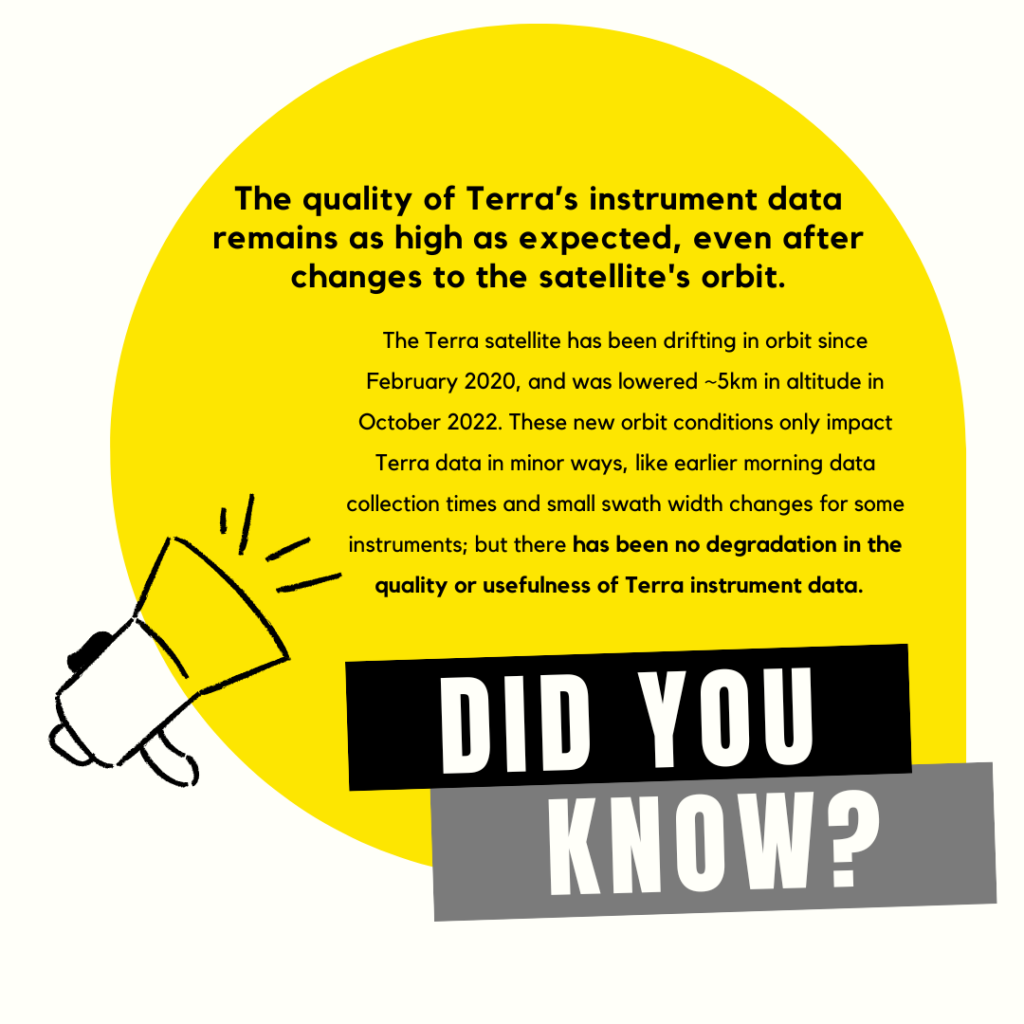We’re kicking off the new year with a fresh homepage layout and a new bi-weekly series of infographics that highlight important Terra information. Our first infographic highlights the continued high quality of Terra instrument data — even with Terra’s new orbit (click the link to learn more!). Feel free to share this graphic widely, and check back for more Terra facts every other week on the Terra website homepage.


